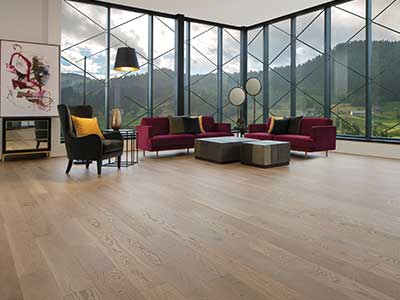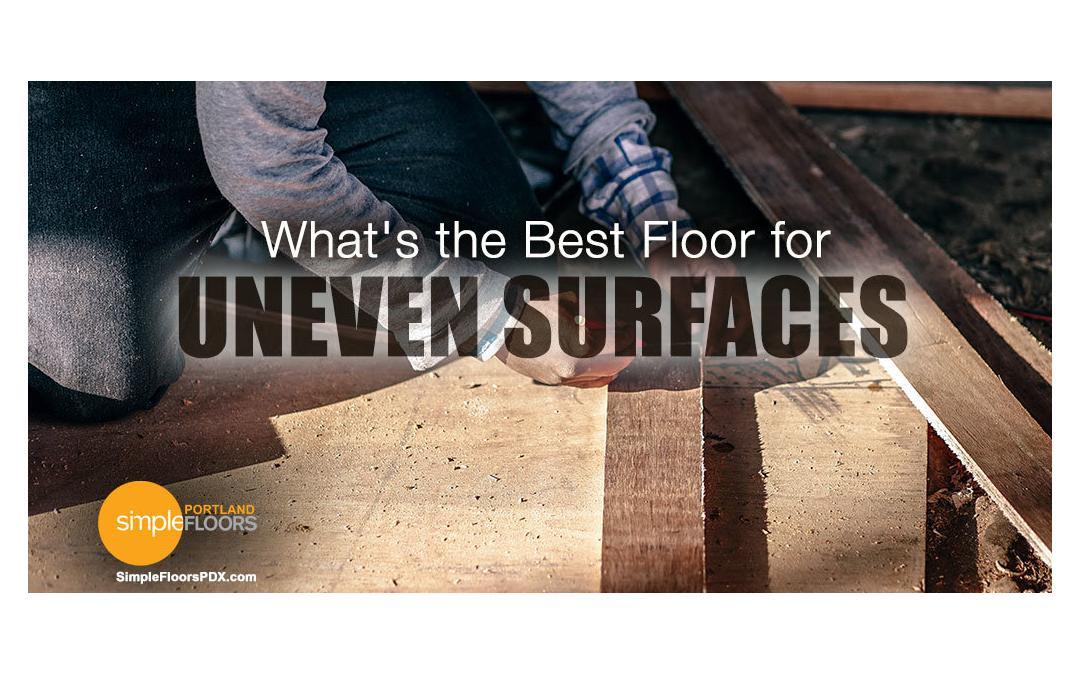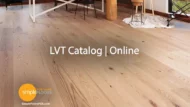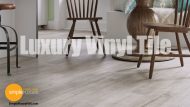When doing a home renovation or remodel, there are many considerations. Some of the choices that need to be made are structural, some are general design and still others are flow and the visual perspectives that you are trying to achieve. But when it comes to deciding on which floor to select, it isn’t solely a design or preference that drives your choice. Sometimes your floor options are driven by structural and subfloor imperfections and the effects that those have on your budget, which either limit or expand your floor options.
Uneven Floor Surfaces
There are many reasons that a floor surface or subflooring can be uneven. The most common reasons are either a basement or other concrete based surfaces -or- a remodel that has various levels of subflooring. In a perfect world, all the old flooring and subflooring would be removed and have everything leveled with a brand new subflooring surface. This would definitely leave your floor project on solid ground that gives you just about every floor option to choose from. However, not every renovation budget supports this costly solution, so what can you do?
Floating Floor – The Best Floor For Uneven Surface
A floating floor is easily installed without using glue, staples or nails, making it an exceptional DIY floor option. Installation of floating floors are easy and fast because planks click or snap together quickly and “float” above the subflooring surface.
A typical floating floor application is done using either wood, laminate or luxury vinyl tile flooring products. The floating floor application allows the flooring material to attach to itself, rather than be nailed to the subfloor. Because a floating floor installation isn’t fastened firmly to the subfloor, it doesn’t show the imperfections of the underlayment. This unique aspect of a floating floor makes it a perfect flooring application for uneven surfaces.
Floating Floor Options
Depending on the application, you have three main choices for floating floors. Below we cover each of the different types of floor that can be installed in a floating application.
Engineered Hardwood Floating Floor
One of the most desired floating floor options is engineered hardwood. Engineered wood flooring is popular because it is made with a top layer of real hardwood, giving it the optimal appearance and characteristics of solid wood flooring, without needing to be fixed to the subfloor surface.
In an application where the subfloor has uneven tendencies and/or crosses over various rooms with differing subfloor surfaces, engineered flooring gives you real wood, where you otherwise would have to put down new subflooring. Because engineered hardwood has a top layer of actual wood, you are able to get the best of both worlds. Easy installation, lower costs and in a floating floor installation without sacrificing on real wood. A simple bead of glue attaching each board to the other is all it takes to install engineered wood flooring as a floating floor.
Luxury Vinyl Tile Floating Floor
Luxury vinyl tile is the newest floating floor option that has dramatically grown in both popularity and appreciation over the last several years. Unlike sheet vinyl flooring, luxury vinyl tile comes in planks like real wood flooring and has a near identical appearance AND texture to traditional hardwood and engineered flooring.
In addition to the floating floor installation method, LVT floors offer scratch, water and high traffic protection that is unequaled in any other flooring types. Priced similarly to laminate flooring and less expensive than engineered ,many consumers are selecting luxury vinyl tile due to its superior look and texture over laminate, at a lower cost than engineered hardwood.
Laminate Floating Floor
Probably the most well-known option in floating floors is laminate flooring. Laminate flooring was first invented and made popular by the Swedish company, Pergo in 1977. Laminate floors are made using a layered, synthetic composite construction of four main materials.
The four layers that make up laminate flooring is the top wear layer, the design layer, the inner core and the backing. The layers of materials combine to make laminate floor a durable, inexpensive and long-lasting alternative to other flooring options on the market today. As one of the least expensive wood-like floating floor choices, it is a very popular option for homeowners.
Installing A Floating Floor
There are hundreds of manufacturers of floating floors. Each have a different method of connecting one plank or piece to the next. Many floating floors also have different subfloor preparation requirements, and some vary depending on the application of the install. For example, a vapor barrier may be suggested in a basement installation of floating floors with some brands, while others require an underlayment material in every application.
When it comes to installing a floating floor, most simply click or snap together. As we discussed earlier, by definition a floating floor floats and is not secured to the subfloor, but the floor pieces do need to be attached to each other in order to perform properly. Though every floating floor manufacturer can have their own unique fitting, every floating floor product is designed to attached together without fasteners, with exception to the slight difference with engineered wood floating floors that usually require a bead of glue at the joints.
The unique installation applications that floating floors afford homeowners make it the best option for uneven flooring surfaces. When you consider the choices in floor construction, pricing and the ability to easily install floating floors yourself, the cost and other advantages are clear.










I am finding vinyl planks less than ideal for a bathroom floor with imperfections. The planks have to lie perfectly for the snap-together joints to work.
That certainly depends on the brand and the connection they use.
What is the best glue to adhere wood to vinyl for a transition strip.
I am surprised to see floating floors suggested as the best choice over uneven surfaces vs. glue-down laminate vinyl options which would adhere to the uneven sub-floors. Wouldn’t the space between the uneven sub-floors and the floating floors create the cracking/popping sound many dislike about floating floors? It seems floating floors would be a better choice for even sub-floors. Anyone have real-life experience with uneven sub-floors and click-lock floating laminate vinyl tile?
Glue down laminate would definitely show all of the uneven surface problems through the flooring. Yes Floating is the best option from our experience.
How do you remedy the space between the varying floor levels with a floating floor? I find when I am at someone’s house and their is an uneven sub-floor, you can feel it when you walk over it and sometimes it makes a popping sound.
You start by laying a float coat over the effected areas. They install the flooring
What is a float cost? I’m dealing with this in an older home, floors dip. Can’t get the pieces to lock together, there are gaps everywhere
Float coat. Sounds like it’s not a diy project.
I agree totally.
Greetings! In my home office, the floor slopes and it’s painful to keep scooting in order to not slide away from my keyboard. I could move the desk, but suspect the same problem lies elsewhere, besides my desk is heavy and the only place it works in the room. The floor is carpeted, I have a plastic pad underneath for sliding of my chair. I have tried to level the floor, under the chair pad, with various levels of cardboard thickness, but it still does not work. Does anyone have any experience with uneven carpeted floors? This is causing back and body pain every time I try to sit in here. Thanks for any help! Happy New Year!
In the circumstance that you’re explaining with your floor even if you wanted hardwood floor we would have to recommend that the floor be repaired first. That’s beyond an uneven floor situation.
I have a manufactured home. Im remodeling my kitchen. I took out the peninsula between the dinning area and the kitchen. It looks like the metal I beam under the house is higher than the rest of the flooring. Would a cork underlayment help the situation to then lay down a floating floor?